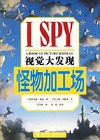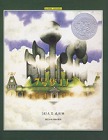三年级下册英语《Lesson27: TV and Telephone》教学设计
11-30 14:08:20| http://www.ertong6.com |小学英语教案|人气:610次
三年级下册英语《Lesson27: TV and Telephone》教学设计小学英语教案,教学目标
掌握(说、认识和口头运用)下列词汇:TV \telephone\ computer\ radio;要求学生练习并能认识下列词汇:watch TV\ talk on the telephone\ play on the computer\ listen to the radio
教学重点难点
掌握及运用TV\ telephone\ computer\ radio
教学准备
教师词汇卡片、录音机、教学磁带。
学生活动设计
编对话,学生两人一组,让他们互相称赞对方的衣服,要求学生提问或说出衣服的名称、颜色及新旧。在学生练习的时候,老师在教师巡视并帮助
教学过程:
Step one: Class Opening and Review
Greeting
T: Hello, everyone!
S: Hello, Miss Lian!
T: How are you, today?
S: I’m fine, thanks. And you?
T: I’m very well. Thank you!
Step two: Key Concepts
1TV, telephone, computer, radio
a.《教科书》
教师分别出示TV, telephone, computer, radio的卡片。问学生:What is it?带领学生一起学习这四个单词。
如果学生已经知道TV这个单词,教师就可以告诉他们这个单词的全称television。
向学生解释加拿大人常把telephone这个单词缩称为phone。
让学生打开《教科书》,再次大气朗读这些单词。
还可以向学生提出诸如此类的问题:
Do you have a TV at home?
Do you like TV?
What else do you recognize in the photographs?
b.学习Chant:
What is it? What is it? What is- it? TV, TV, T-V.
What is it? What is it? What is- it? Computer, computer, computer.
What is it? What is it? What is- it? Radio, radio, ra-dio.
What is it? What is it? What is it? What is-it? Telephone, telephone, tele-phone.
c.播放录音,让学生看书跟读。
d.操练
e.《活动手册》:第一题:让学生画线连接图片和单词。
2.Watch TV, talk on the telephone, play on the computer, listen to the radio.
a.示范
出示CAI课件,问学生:
What’s Li Ming doing? (打电话)
What’s Li Ming doing?(看电视)
What’s Li Ming doing?(打电脑)
What’s Li Ming doing?(听收音机)
教授这些短语,并伴以相应的动作。教师要指出,当一个人拿起电话拨号时,他就是calling someone。当人们通过电话谈话时,他们就是talk on the telephone。
b.操练
让一名自告奋勇的学生站到前面,选出一幅黑板上的图画,然后表演规定的动作。带领学生做问答练习:
T: (指着自告奋勇的学生挑选的黑板上的图画)What’s this?
C: A .或It’s a .
T: Good, He/she is ing(on the /to the) .say it, please, class.
C: He/she’s ing(on the/to the) .
T: Very good! (对自告奋勇的学生说)What are you doing?
S: I’m ing(on the /to the) .
T: Very good! Do you like ing(on t www.ertong6.com he/ to the) ?
S: Yes, I like ing(on the/to the) .或No, I like ing(on the/ to the) .
如果需要,可以用答案提示学生。
出示CAI课件,讨论Jenny的图画,向学生提问:
When does Jenny leave school?
What Jenny will do the first when she gets home?
What Jenny will do after supper?
What Jenny will do when she goes to bed?
学生试着回答。
再次看课件,让学生跟着朗读。
Step three: Class Closing
《活动手册》L27 N2
五、板书:
Lesson27: TV and Telephone
watch TV(television) talk on the telephone(phone)
play on the computer listen to the radio
教学反思:
小学生个性特点就是活泼好动、听觉灵敏、善于模拟、具体形象思维好、富于想象,非凡是低年级的学生。教师单纯的说教,让学生反复的跟读,单一的教学形式,是根本不可能让他们乖乖地坐在凳子上,兴致盎然地听完一节课的。反之,在课堂教学中,教师借助各种媒体创设多种情景,将课文情景变成“剧本”,活生生的展现在学生的面前,使教学内容形象、具体、生动,学生的学习积极性就会大大上升。这样的教学形式既符合直观性的教学原则,又符合儿童的年龄特点和思维规律,易于被学生接受。学生在轻松愉快的气氛中,既进行了综合语言练习,又体会到了学习的乐趣
掌握(说、认识和口头运用)下列词汇:TV \telephone\ computer\ radio;要求学生练习并能认识下列词汇:watch TV\ talk on the telephone\ play on the computer\ listen to the radio
教学重点难点
掌握及运用TV\ telephone\ computer\ radio
教学准备
教师词汇卡片、录音机、教学磁带。
学生活动设计
编对话,学生两人一组,让他们互相称赞对方的衣服,要求学生提问或说出衣服的名称、颜色及新旧。在学生练习的时候,老师在教师巡视并帮助
教学过程:
Step one: Class Opening and Review
Greeting
T: Hello, everyone!
S: Hello, Miss Lian!
T: How are you, today?
S: I’m fine, thanks. And you?
T: I’m very well. Thank you!
Step two: Key Concepts
1TV, telephone, computer, radio
a.《教科书》
教师分别出示TV, telephone, computer, radio的卡片。问学生:What is it?带领学生一起学习这四个单词。
如果学生已经知道TV这个单词,教师就可以告诉他们这个单词的全称television。
向学生解释加拿大人常把telephone这个单词缩称为phone。
让学生打开《教科书》,再次大气朗读这些单词。
还可以向学生提出诸如此类的问题:
Do you have a TV at home?
Do you like TV?
What else do you recognize in the photographs?
b.学习Chant:
What is it? What is it? What is- it? TV, TV, T-V.
What is it? What is it? What is- it? Computer, computer, computer.
What is it? What is it? What is- it? Radio, radio, ra-dio.
What is it? What is it? What is it? What is-it? Telephone, telephone, tele-phone.
c.播放录音,让学生看书跟读。
d.操练
e.《活动手册》:第一题:让学生画线连接图片和单词。
2.Watch TV, talk on the telephone, play on the computer, listen to the radio.
a.示范
出示CAI课件,问学生:
What’s Li Ming doing? (打电话)
What’s Li Ming doing?(看电视)
What’s Li Ming doing?(打电脑)
What’s Li Ming doing?(听收音机)
教授这些短语,并伴以相应的动作。教师要指出,当一个人拿起电话拨号时,他就是calling someone。当人们通过电话谈话时,他们就是talk on the telephone。
b.操练
让一名自告奋勇的学生站到前面,选出一幅黑板上的图画,然后表演规定的动作。带领学生做问答练习:
T: (指着自告奋勇的学生挑选的黑板上的图画)What’s this?
C: A .或It’s a .
T: Good, He/she is ing(on the /to the) .say it, please, class.
C: He/she’s ing(on the/to the) .
T: Very good! (对自告奋勇的学生说)What are you doing?
S: I’m ing(on the /to the) .
T: Very good! Do you like ing(on t www.ertong6.com he/ to the) ?
S: Yes, I like ing(on the/to the) .或No, I like ing(on the/ to the) .
如果需要,可以用答案提示学生。
出示CAI课件,讨论Jenny的图画,向学生提问:
When does Jenny leave school?
What Jenny will do the first when she gets home?
What Jenny will do after supper?
What Jenny will do when she goes to bed?
学生试着回答。
再次看课件,让学生跟着朗读。
Step three: Class Closing
《活动手册》L27 N2
五、板书:
Lesson27: TV and Telephone
watch TV(television) talk on the telephone(phone)
play on the computer listen to the radio
教学反思:
小学生个性特点就是活泼好动、听觉灵敏、善于模拟、具体形象思维好、富于想象,非凡是低年级的学生。教师单纯的说教,让学生反复的跟读,单一的教学形式,是根本不可能让他们乖乖地坐在凳子上,兴致盎然地听完一节课的。反之,在课堂教学中,教师借助各种媒体创设多种情景,将课文情景变成“剧本”,活生生的展现在学生的面前,使教学内容形象、具体、生动,学生的学习积极性就会大大上升。这样的教学形式既符合直观性的教学原则,又符合儿童的年龄特点和思维规律,易于被学生接受。学生在轻松愉快的气氛中,既进行了综合语言练习,又体会到了学习的乐趣
关键字: 小学英语教案,pep小学英语教案,人教版小学英语教案,闽教版小学英语教案
三年级下册英语《Lesson27: TV and Telephone》教学设计相关文章
- ·上一篇:三年级下册英语《Lesson28: In the Bedroom》教学设计
- ·下一篇:三年级下册英语《Lesson 26:Homework do my homework read 》教学设计
- › 人教版三年级下册:12、想别人没想到的·教案
- › 人教版三年级下册:13、和时间赛跑·教案
- › 苏教版小学三年级下册:《练习4》教案
- › 人教版三年级下册:5、翠鸟·教案
- › 苏教版小学三年级下册:《放飞蜻蜓》教案
- › 苏教版小学三年级下册:《槐乡五月》教案
- › 苏教版小学三年级下册:《恐龙》教案
- › 人教版三年级下册:7、一个小村庄的故事·教案
- › 人教版三年级下册:8、路旁的橡树·教案
- › 苏教版小学三年级下册:《七颗钻石》教案
- › 人教版三年级下册:10、惊弓之鸟·教案
- › 苏教版小学三年级下册:《剪枝的学问》教案
- › 《Unit 6 At the zoo》教案
- › 《Unit 3 Let's paint Part A let's lea
- › PEP《Unit5 What would you like?》教案
- › 《unit 1 Hello Part A let's learn》教案
- › PEP英语三年级下册《Unit2 My family B Let’s t
- › 《It’s warm today.》教案
- › 六年级英语第四单元《Unit 4 My holiday》教学设
- › 三年级英语下册《Unit 3 How many?》教学设计
- › Unit4 Postman and policeman Let’s learn教学设
- › Unit3 Hobbies 第一课时 教学设计
- › Unit 3 Asking the way教学设计
- › 小学英语教学反思














